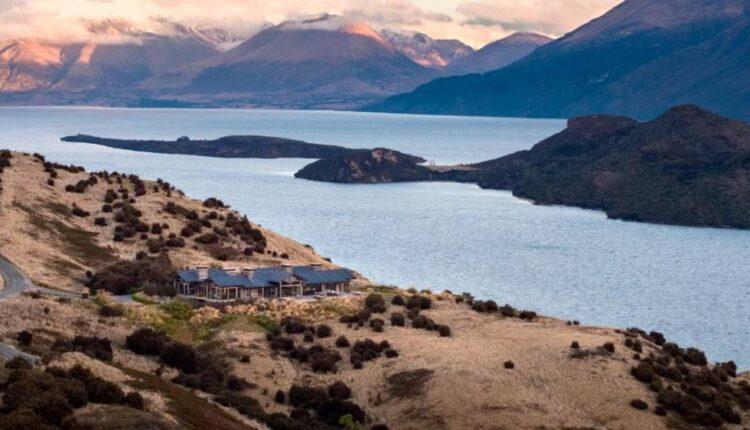Queenstown, New Zealand (CNN Business)In Queenstown — a picturesque ski spot that often attracts comparisons to Aspen, Colorado — rumors about foreigners investing in apocalypse-proof bunkers have been swirling for years.
They’re referenced by local real estate agents: One recent listing advertised a house as a “billionaire bunker” for someone on a budget, for example. And there’s even a local bar called The Bunker, a seemingly tongue-in-cheek reference to the bulletproof boltholes. Queenstown residents are skeptical about whether the secret, underground hideaways are actually as prevalent as such allusions would suggest. Unlike in the United States or Europe, where bunkers are frequently photographed and written about, there’s scant evidence to prove that any bunkers have actually been installed.
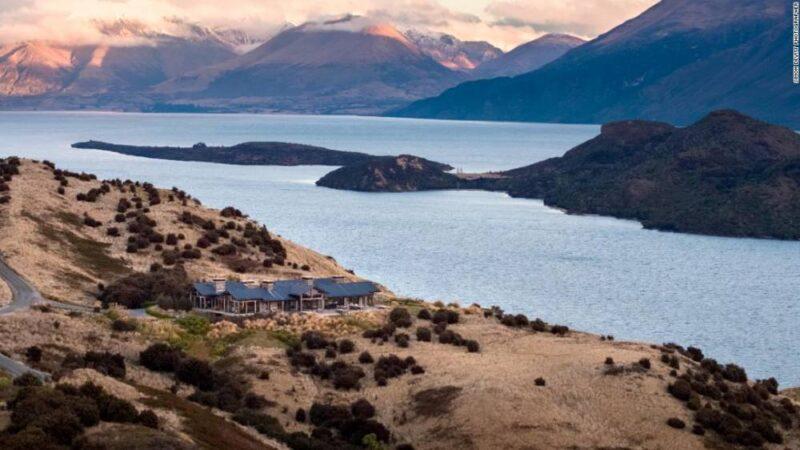
A property near Queenstown, New Zealand, designed by Mason & Wales Architects. But the New Zealand resort town’s reputation as a place where the world’s wealthy might prefer to ride out the end times isn’t entirely undue.For years, Queenstown has been an attractive destination for elite foreigners who may have reason to seek out a metaphorical bunker, safe from major political turmoil thousands of miles away. Notable US-based homebuyers include Silicon Valley billionaire and political firebrand Peter Thiel and disgraced former NBC News anchor Matt Lauer.Read MoreNow that the coronavirus pandemic has wreaked havoc worldwide, Queenstown is once again sparking interest as the perfect place to escape catastrophe — with or without a secret bunker.
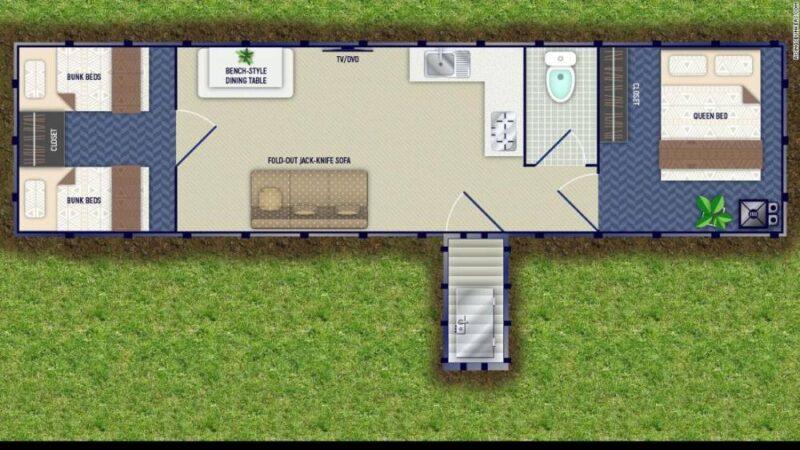
A floor plan of one of Rising S’ bunkers.
A secretive bunker market
“We don’t sell fear. We sell preparedness.” That’s the claim American bunker builder Rising S makes on its website, where it advertises “preparedness” as mini-compounds that can feature functioning kitchens, restrooms, solar-powered electricity and surveillance — starting from around $39,500 and running into the millions.”Everybody wants their own personal touch to it, just like building a house,” said general manager Gary Lynch, adding that the company has sold approximately 1,400 bunkers in its 18-year history. “They’re looking for something to protect their families, something that’s self sufficient, something that they can live in for a prolonged period of time.”This year alone, Lynch expects to sell around a dozen bunkers to New Zealand — which would double the firm’s total sales ever in the country, which have mainly been to American buyers. Traditionally, the New Zealand market makes up a tiny fraction of his clients, but there was an uptick in interest in 2017 and 2018, he said. “There were a lot of people that were buying land and putting bunkers” below ground, he said. Lynch says he won’t show CNN Business a bunker because his clients’ privacy is paramount. He doesn’t want to go into specifics because it brings “scam artists” into the industry, who he says think they can build bunkers for cheaper. When asked where the bunkers are in New Zealand, he claims they are “all over” the place. But he also says he’s had some difficulty getting bunkers into the country — though he was secretive about why that is and where exactly he regularly ships them to, joking that he almost needs to enlist American magician David Copperfield to help him.
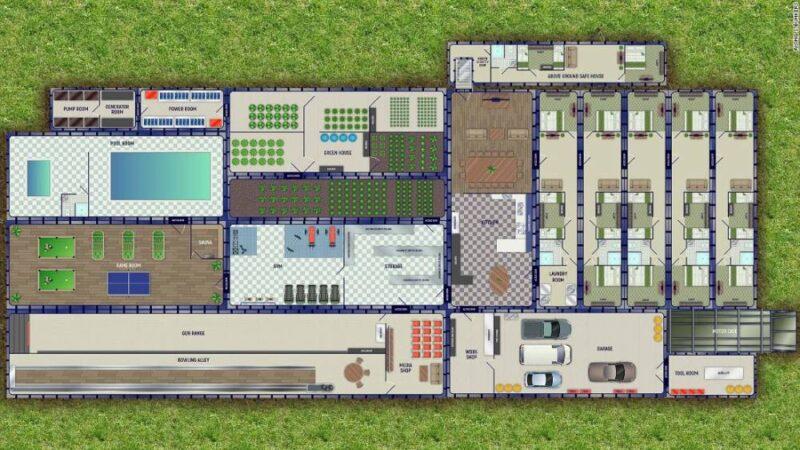
A floor plan of a Rising S bunker. “The amount of exposure that we gained through the media, through the interest in shelters going to New Zealand, has made it incredibly hard for me to keep using the same methods that I did before to get shelters to New Zealand,” he said. As for whether Lynch gets permits from local authorities to install the bunkers underground, he said: “We’re supposed to, yes. I don’t encourage anyone to do anything that goes against the rules.”
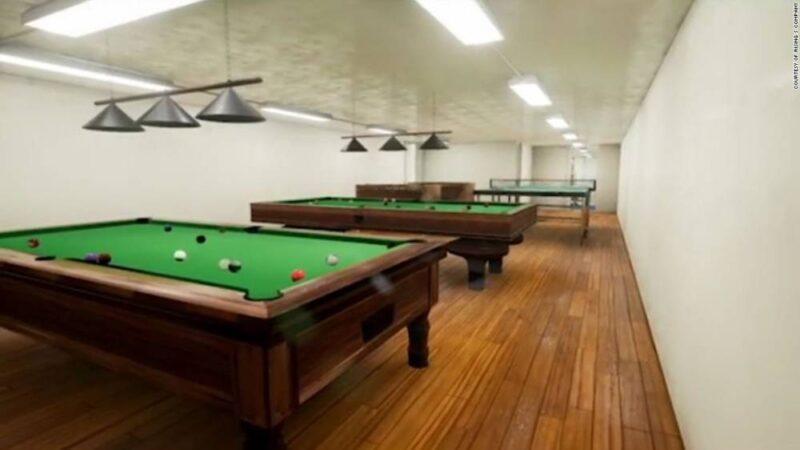
Rising S Company offers several high-end models, including the Aristocrat, which is priced at $8.35 million. The design incorporates a game room, bowling alley, gun range, garage, and pool.
Lynch isn’t the only bunker maker who is cryptic about the business. Bloomberg reported earlier this year that California-based Vivos claimed it had installed a 300-person bunker in New Zealand. But when asked by CNN Business about his company’s dealings in June, founder Robert Vicino was reluctant to elaborate.”Inquiries from New Zealand are up significantly as they are from the rest of the world,” Vicino said. “For security reasons we cannot comment on any Vivos bunkers in New Zealand.”
A town for the wealthy
On paper, Queenstown — and New Zealand more broadly — makes an attractive housing market for foreigners, even without secretive bunkers.In the town of 40,000 people, more than 25% of private dwellings are unoccupied. Queenstown often ranks as among the most popular places in New Zealand for foreign buyers. In the first quarter of this year, 4.1% of properties were transferred to buyers who didn’t hold New Zealand citizenship or resident visas. In recent years, around 10% of sales in the region have gone to foreign buyers.New Zealand does not have a foreign property register, meaning there is no official data on the total number of properties in New Zealand held by foreigners, or where foreign property owners are from.The country has made it more difficult in recent years for non-New Zealand citizens to buy residential property, in a bid to bring down an overheated market and make property more accessible for local first-home buyers.Yet there are ways around the rules, say experts, as long as foreigners can pass a rigorous approval process and show they can provide benefits to New Zealand, such as helping protect the local flora and fauna. US interest in immigrating to New Zealand seems to be particularly strong: The number of Americans who registered interest on Immigration New Zealand’s website in May was nearly 66% higher than the same month a year prior. But ask someone in Queenstown if they’ve seen a bunker, and you’re more likely to get a laugh than a lead. “Certainly, I’ve been in several of these people’s houses and I’ve never (seen one),” Queenstown businessman and philanthropist Eion Edgar said from his lakeside mansion, where work by high-profile New Zealand artists hangs on the walls. “Look, it may be the new trend, but I would be surprised.””To be honest, it makes me laugh, because I’m not aware of any bunkers,” said Queenstown’s mayor Jim Boult from his office. “It is arguably the most beautiful place in the world, so I understand their desire, but I’m not aware of any bunkers.”Real estate agents, builders and architects all had a similar response. Queenstown lawyer Graeme Todd, who specializes in overseas property transactions and resource management law, says if bunkers were being installed, he would have heard about it. The most bunker-like thing he’s ever seen is a wine cellar. “Frankly, I think it’s a marketing [move].””I think it’s a good story,” said Hamish Muir, an architect director at local firm Mason and Wales Architect, before adding, definitively: “They don’t exist.”After all, if Rising S were importing steel bunkers from the US, some people would likely know about it. Especially if, as Lynch says, the bunkers are being shipped fully constructed. They would need to come through the border, and then be transported to the installation site. Once there, the council would need to consent to their installation, and a landscaper or builder would need to dig meters into the earth to install the bunker.But there’s no sign of any of that.
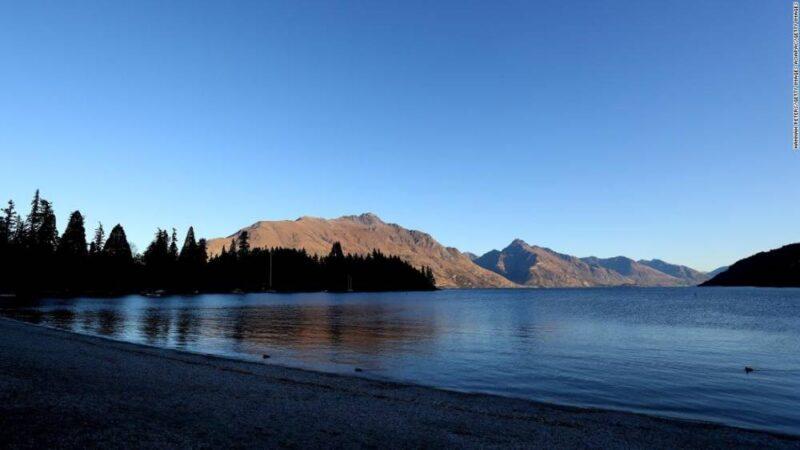
A general view of the lake front on June 25, 2020 in Queenstown, New Zealand. Customs New Zealand said it had done an “extensive search” of its online information systems for imports from Rising Sand had “no record of any dealings with a company of that name.” KiwiRail, one of New Zealand’s biggest freight companies, said it couldn’t release details of its rail freight or ship cargo “due to customer privacy considerations.”The Queenstown Lakes District Council, meanwhile, said it had not had any resource consent applications — which are necessary for earthworks and building — for bunkers or similar projects over the past five years. “This doesn’t appear to be something we’re currently actively investigating,” the council said in a statement.Eight other South Island district councils all said the same, with varying degrees of incredulity.”We may be a relatively underpopulated country,” said Chris Choat, a spokesman for Tasman District Council, which represents a region on the west coast of the South Island where a Rising S bunker was installed years ago, according to a Bloomberg report. “But in saying that, communities know what is happening in their backyard.”
The truth about bunkers
Even so, there may be some elements of truth to the bunker idea.According to Muir, the architect, a huge number of the properties he’s worked on have a subterranean elements. But that is less to do with escaping disaster, and more to do with meeting height restrictions imposed by authorities to maintain the town’s aesthetics.
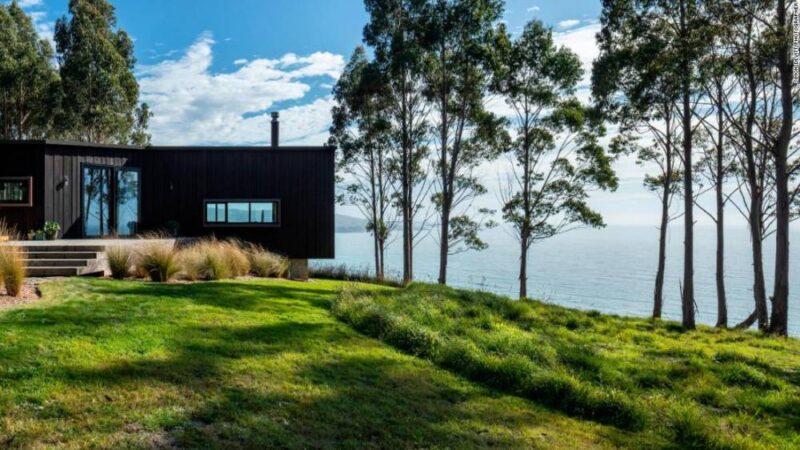
A property in the South Island of New Zealand, designed by Mason & Wales Architects. Luxury real estate agent Bas Smith gave the example of a 25 million New Zealand dollar ($16 million) property at Wyuna Preserve — an exclusive, picturesque development out of Queenstown — which has a 600-square-meter basement that includes a cinema. It’s not a bunker, per se, but it could be seen as that, he says. Many people who spoke with CNN Business pointed out that New Zealand is a place where an underground bunker isn’t exactly necessary. Here, volcanoes and earthquakes pose a much greater danger than nuclear war or civil unrest. The idea of a bunker in New Zealand is “more a metaphor for a safe haven -— choosing a place which has a safe government, a safe economy,” Smith said. “And it’s a long way from everywhere.”Terry Spice, a luxury real estate specialist in Arrowtown, a scenic town near Queenstown, says he’s seen a surge in interest from people who want their own “safe haven ticket.” Smith says he gets 70 inquiries a day from people overseas. “None of these guys that I deal with say they’re preparing for the end of the world. They say things like, In times of geopolitical pressure, New Zealand is a cool place to be because it’s farther away.The coronavirus pandemic may be proof of that concept, in a way.
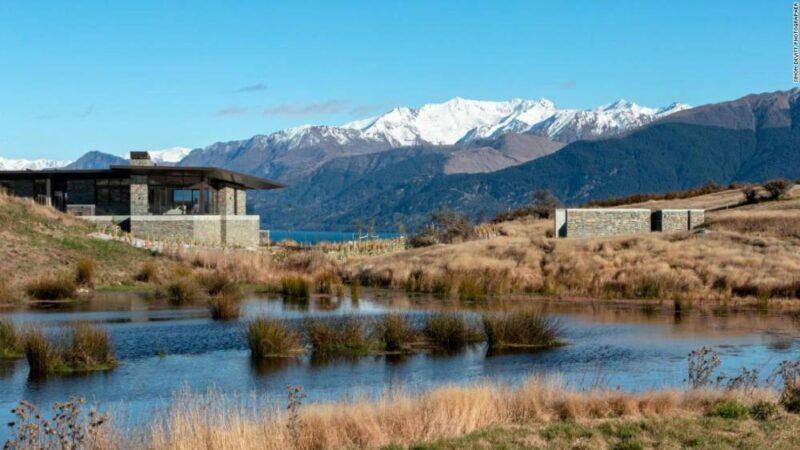
A property near Queenstown, New Zealand, designed by Mason & Wales Architects. Multiple residents of the Queenstown area said that Americans who didn’t normally live there spent New Zealand’s coronavirus lockdown in town. Queenstown Airport records show that at least two private jets landed while the country was under strict lockdown, though it isn’t clear where they arrived from.New Zealand’s tough approach to dealing with the coronavirus means that it frequently has days where it reports no new cases. The United States — which was slower to act against the coronavirus — continues to report thousands of new coronavirus cases each day. David Hiatt, who runs a helicopter operator in Queenstown called the Alpine Group, said “without a doubt” wealthy Americans were riding out coronavirus in Queenstown. “Local operators are grateful to the fact that some of them are here,” he said.
Trickle down effect?
Not everyone wants more wealthy Americans in the country.In April, prominent New Zealand businessman Rod Drury called on the government to allow foreigners to buy luxury holiday homes to help stimulate the economy. Todd, the lawyer, also took an idea to allow foreigners to buy property over a certain value to two government ministers, but was stone-walled, he says.In Queenstown, many people see the rich Americans who have bought property as big contributors to the community. “The good thing about wealthy people is that they spend money,” said Edgar — they build houses and then often contribute money to local projects.
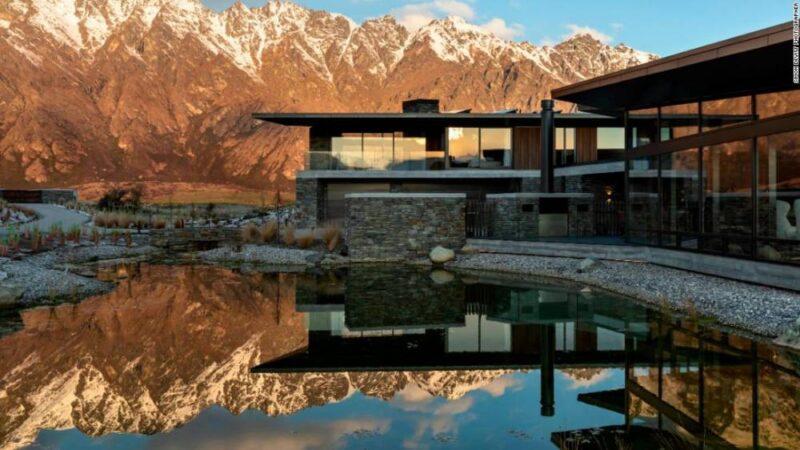
A property near Queenstown, New Zealand, designed by Mason & Wales Architects. That’s not how the government sees it. “That philosophy has existed in New Zealand for a number of years, and it has never been one I have subscribed to or believe actually achieves what people claims it does,” New Zealand Prime Minister Jacinda Ardern, told media in April after Drury’s proposal. Ardern, who campaigned on banning foreign home buyers, has repeatedly blamed overseas speculators for pushing up housing prices, pricing New Zealanders out of the market. As the pandemic swept the world, Ardern’s Housing Minister David Parker tightened rules even further to protect “key assets” from being bought by foreigners. New Zealand has an election coming up in September.
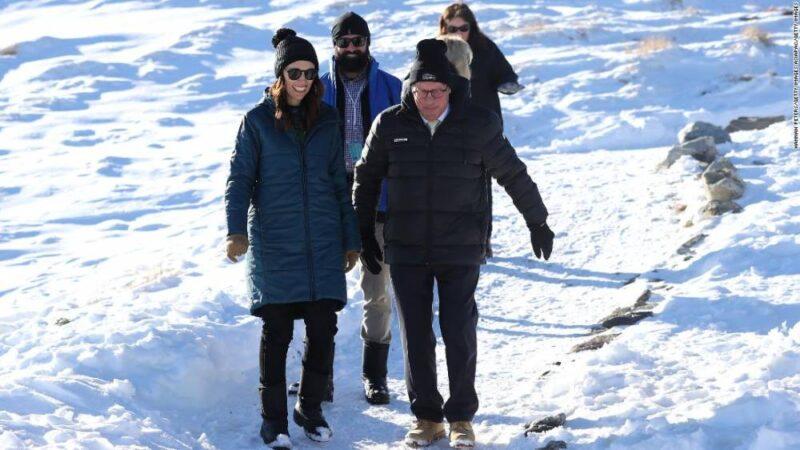
Prime Minister Jacinda Ardern during a visit to Cardrona Alpine Resort on June 26, 2020 in Cardrona, New Zealand, as the town’s ski season opened to the public. Some see changing the rules around foreign ownership as a way to capitalize on New Zealand’s remoteness and its positive media attention over the way it has handled coronavirus. Opponents, like Ardern, don’t see the benefits for New Zealanders. In Happiness House, a modest house that serves as a social welfare center for the community, manager Robyn Francis has seen the effects of foreign ownership first hand. Before the coronavirus pandemic, Queenstown properties sat empty for much of the year, while renters had to roomshare and some long-term residents left town over high rents. According to local media, Queenstown was the most expensive place to rent in New Zealand, with the average rents higher than take-home pay for a minimum-wage earner. “It was unachievable for most Kiwis to live here,” she said. “There was a housing crisis because a lot of those houses were sitting empty.”
Francis doesn’t want a return to the old rules, which she says contributed to the lack of affordable housing, making property “exclusive.” Ultimately, many will be hoping that foreign boltholes — be they bunkers or not — don’t come at the cost of New Zealanders’ own safe haven.
Source: edition.cnn.com

